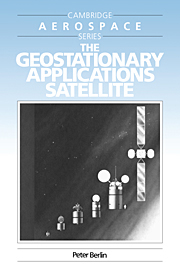The Geostationary Applications Satellite
Berlin offers an in-depth look into all the engineering aspects of geostationary satellite design, construction, and launch. Geostationary satellites have opened new doors for the peaceful use of outer space. From vantage points 22,000 miles above the equator, they permit people anywhere on land, at sea, or in the air to communicate with each other, and they provide meteorologists, geologists, and other scientists with photographs of the earth. This book gives equal emphasis to the explanation of launch vehicles, orbital mechanics, the space environment, spacecraft structures, mechanisms, thermal control, telemetry tracking and command, communications technology, meterological payloads, product assurance and testing.
Product details
December 2004Paperback
9780521616034
232 pages
229 × 152 × 13 mm
0.35kg
Available
Table of Contents
- Preface
- List of acronyms
- 1. Launch vehicles
- 2. The transfer orbit
- 3. The geostationary orbit
- 4. The satellite environment
- 5. Structures
- 6. Mechanisms
- 7. Thermal control
- 8. Power supply and conditioning
- 9. Propulsion and orbit control
- 10. Attitude stabilization, measurement and control
- 11. Telemetry, tracking and command (TT&C)
- 12. Communications payload
- 13. Meteorological payload
- 14. Product assurance
- 15. Spacecraft development and testing
- Index.







